The Angelbird Wings PX1 M.2 Adapter Review: Do M.2 SSDs Need Heatsinks?
by Billy Tallis on December 21, 2015 8:00 AM ESTMixed Random Access
Instead of testing a range of queue depths, our mixed workload tests vary the proportion of reads and writes while using a constant queue depth. The test begins with pure reads, then incrementally shifts toward pure writes with three minutes for each subtest. As more writes come in to the mix, the odds increase that a read request will be held up by one of the flash chips being busy with a longer-duration write. Likewise, having lots of reads in the mix can limit the drive's ability to combine writes into larger batches. Thus, the worst performance on these tests usually occurs somewhere around the middle. To approximate client workloads, the mixed random access test uses a queue depth of three and like the random write test it is restricted to a 16GB portion of the drive.
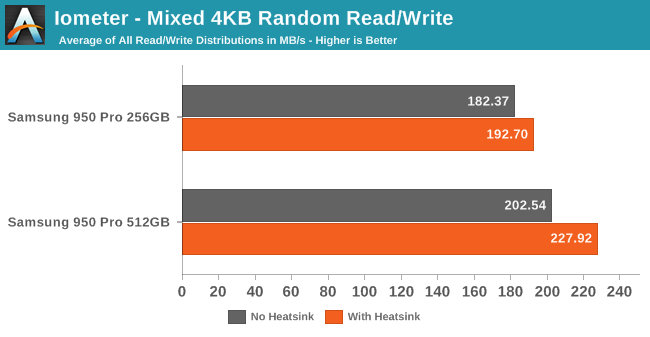
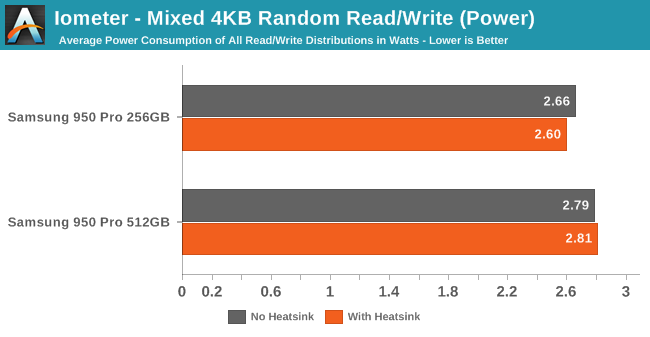
The mixed workloads were the only tests where the two capacities showed significant performance differences even without the heatsink, indicating that thermal throttling was much less of an issue for the 950 Pro here. The heatsink still helps, but only slightly. Given how random reads were essentially unaffected by the heatsink, it's a bit of a surprise that the writes improved by enough to bring the average up by 12.5% for the 512GB drive.
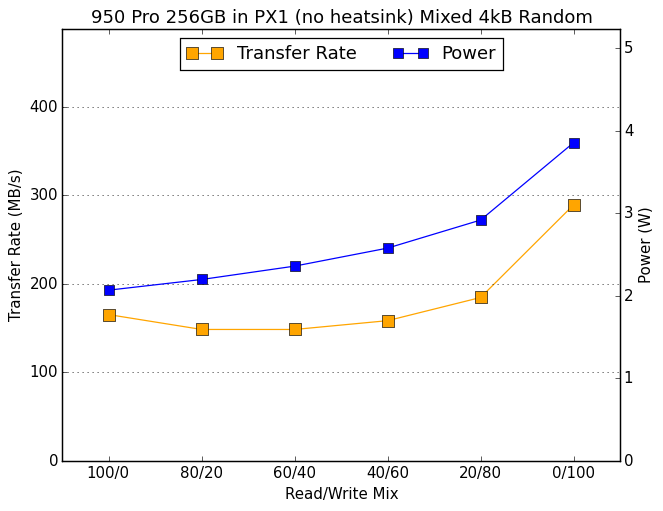 |
|||||||||
| 256GB no heatsink | 512GB no heatsink | ||||||||
| 256GB with heatsink | 512GB with heatsink | ||||||||
Almost all of the performance improvement with the heatsink comes at the very end of the test as it shifts to pure writes. Performance earlier in the test is virtually unaffected by the heatsink, but power efficiency does see the slight improvement from lower operating temperature.
Mixed Sequential Access
As compared with the mixed random test described above, the mixed sequential test differs by using a queue depth of one and by requesting larger chunks of data. This test operates across the whole drive, which is pre-filled with data.
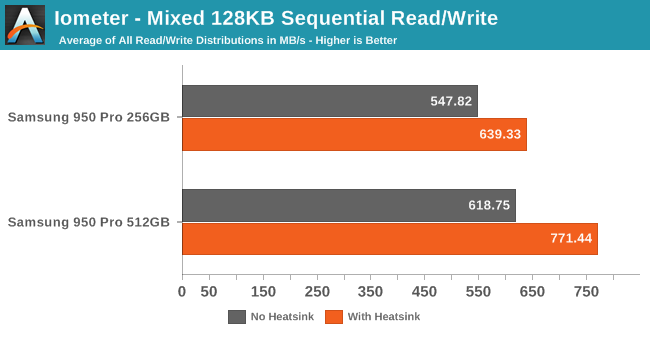
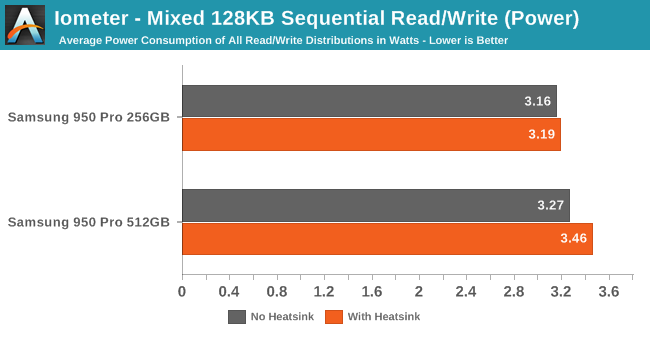
Both of the previous sequential performance tests showed huge improvements even at low queue depths, so it's no surprise to see a significant improvement in a mix of the two.
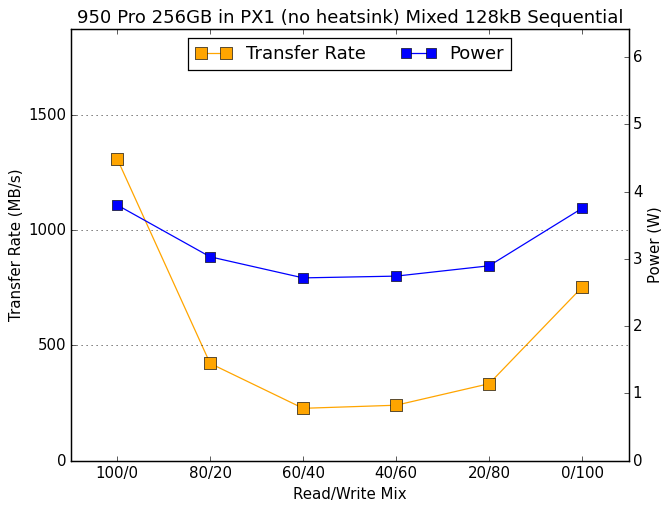 |
|||||||||
| 256GB no heatsink | 512GB no heatsink | ||||||||
| 256GB with heatsink | 512GB with heatsink | ||||||||
A closer look reveals that the overall performance improvements are once again attributable to the non-mixed segments of the test. Unlike the mixed random test, read speeds are part of the improvement here. But on the sub-tests with a balanced mix of reads and writes, the 950 Pro wasn't throttling even without the heatsink.










69 Comments
View All Comments
Refuge - Tuesday, December 22, 2015 - link
It is supply and demand, not just charge 10% more than BoM on our entire product catalogue. Loljoex4444 - Tuesday, December 22, 2015 - link
You're also changing the interface from SATA-III to PCIe 3.0 x4. One of these things is mature and common as dirt, one of them is not.Ethos Evoss - Sunday, December 27, 2015 - link
I already have it on the laptop :)damianrobertjones - Monday, December 21, 2015 - link
It's the future... until they change it due to wanting people to spend more $$$$ to replace what they already have.TelstarTOS - Wednesday, December 23, 2015 - link
Not at all. U.2 is the future. M2 drives capacity is crippled.Teizo - Monday, December 21, 2015 - link
Having LED's on this product will only help sales if it is full RGB so people can adjust the lighting to match their system. Mix/Match lights is a major detraction/distraction for people who go to great lengths to color coordinate their systems.mooninite - Monday, December 21, 2015 - link
Meanwhile there are starving children in Africa. Geeze...tipoo - Monday, December 21, 2015 - link
You could say that about practically everything on sites like this, so kindly get off that high horse.Teizo - Monday, December 21, 2015 - link
Irregardless of your high minded comment, what I stated was in fact true. They decided, more than likely, that LED's would help with sales because gamers and enthusiast love LED's...but a little more thoughtful digging into things would reveal that the ability to color coordinate is pivotal when adding LEDs into system builds. Those kids in Africa are thrilled with your monthly monetary contribution, btw. There should be more people like you in the world.Demiurge - Monday, December 21, 2015 - link
You know, since the LED's are white... you could, y'know... buy a translucent material of the color of your choice and cover the card LED's with that and get the desired effect... without pestering the company to pander to waste money on that many RGB LED's at which you'd complain about the lack of a competitive price and not buy it anyway followed by you buying one without that is cheaper and buying a an LED strip yourself and attaching it...